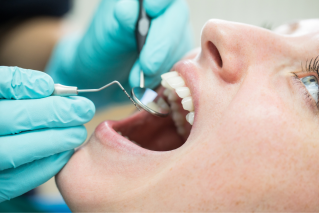The King’s accidental cancer diagnosis: Could it happen to you?

It doesn’t help that the kingship of Charles is handed down by God. Take away the crown, and his story is a very human one, your basic nightmare.
When the King shared with the world his diagnosis of a benign enlargement of his prostate, he may have had some anxieties about the surgery.
But he would have been feeling pretty confident that he would be repaired, and life would go on.
Why not be confident?
After all, he was having most common and most proven procedure, called ‘transurethral resection of the prostate’ (TURP).
TURP is carried out using a device called a resectoscope, which is a thin metal tube containing a light, camera and loop of wire.
This is passed along your urethra until it reaches your prostate, which means no incisions need to be made in your skin.
The loop of wire is then heated with an electric current and used to cut away the section of your prostate causing your symptoms.
A nasty surprise
It was during the procedure, that the surgeons, via the camera, discovered cancer.
Part of the camera function is to look for evidence of cancer in the bladder or urethra.
It’s rare to find these cancers in train. The King has not revealed what type of cancer it is.
He wasn’t expecting it.
And think of this – he’d have had a biopsy to confirm that the enlargement was benign. Always an icky moment waiting for those results.
And then, coming out of surgery, hearing the news.
Incidental diagnosis
What’s happened to the King is called ‘incidental diagnosis’.
This is where doctors follow a line of inquiry that leads them to something completely unexpected.
Opinion are mixed as to how often these things happen.
Talking to The New York Times, some prostate specialists described the the King’s scenario as “pretty rare”. Others said it “wasn’t unheard of”.
A GP who I know of 46 years’ standing told me: “It’s not rare. But it’s not uncommon.”
Dr Otis Brawley, an oncologist at Johns Hopkins Medical Centre, told the Times about a patient who would come in for a check-up of a low-risk prostate cancer.
One of the junior doctors ordered a chest X-ray “for no reason”. It revealed lung cancer.
The emergency department
As the UK Independent reports; a small number of patients are incidentally diagnosed with cancer in emergency departments, “although research shows it is usually later-stage cancers that are picked up this way”.
The Independent said that “the latest report on cancer services from NHS Digital shows 91 out of 100,000 people in 2022-23 had a diagnosis of cancer through an emergency care route”.
Answering questions in an email, the Australian Medical Association talked around the issue of incidental findings, offering instead:
“The best time to catch serious health problems is early – sometimes this will be during a routine checkup, or sometimes minor symptoms can be an early warning sign.”
One in 25 cancer patients diagnosed incidentally
In 2019, scientists from the University College London, and others, studied a population of cancer patients.
Of these, one in 25 (4 per cent) was diagnosed incidentally, “through different mechanisms across primary and secondary care settings”.
The authors say that “epidemiological, clinical, psychological and economic implications of this phenomenon merit further investigation”.
The odds of incidental cancer diagnosis increased with age, with no difference between men and women after adjustment.
Incidental diagnosis was most common among patients with:
- Leukaemia, 23 per cent
- Renal, 13 per cent
- And thyroid cancer, 12 per cent
Incidental diagnosis was the least common among patients with brain, oesophageal and cervical cancer.
Sometimes it comes very late in the day
In 2015, Bond University researchers conducted a systematic review of autopsy studies.
The review “identified 29 studies in more than 20 countries spanning over six decades, which consistently demonstrated a high prevalence of prostate cancer as an incidental finding at autopsy”.
In other words, there are many old men who went to the grave without knowing they had prostate cancer. It was incidentally diagnosed during autopsy.
As expected, the authors write, “the prevalence is most strongly related to age, with the prevalence doubling about every 14 years”.
Corresponding author of the study is Katy Bell, professor of clinical epidemiology at the University of Sydney’s school of public health.
“The findings from our systematic review that you highlight showing increasing prevalence of subclinical prostate cancer with age, indicate increasing risk of prostate cancer overdiagnosis as men get older,” she said in an email.
Bell said that for most of the men in the study, “the prostate cancer would not have caused problems had they lived longer”.








